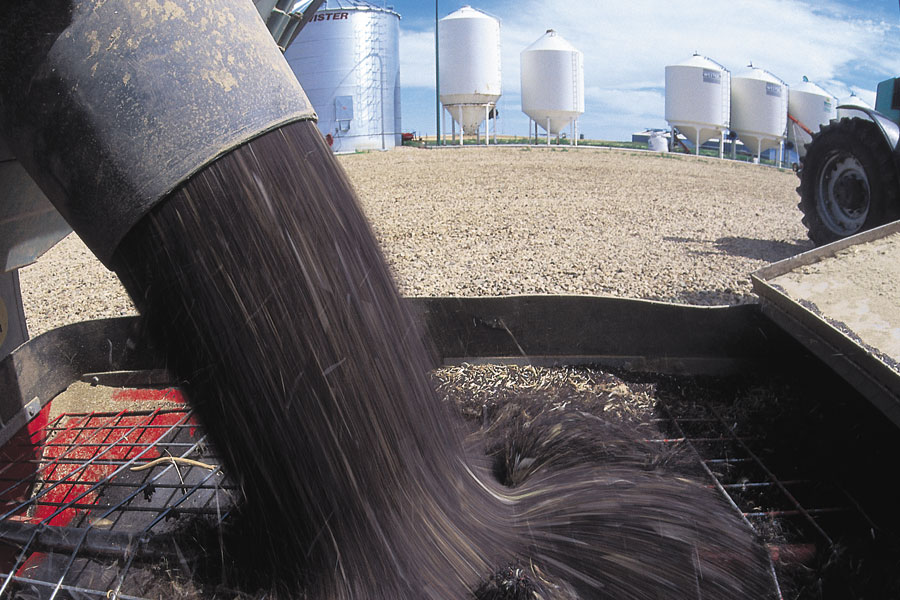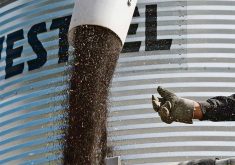A bit of canola underneath the hopper bottom was the only sign something was wrong at Randy Syvenky’s grain bins on the outskirts of Edmonton. But a look inside the bin showed that more than $15,000 worth of canola had been stolen sometime in the night.
“It looks like they took 40 tonnes or about 1,200 to 1,400 bushels of canola,” Syvenky said of the mid-March theft.
“They brought their own equipment to move snow and brought their own grain auger and large truck. It was pretty shocking.”
Read Also

Farming Smarter receives financial boost from Alberta government for potato research
Farming Smarter near Lethbridge got a boost to its research equipment, thanks to the Alberta government’s increase in funding for research associations.
And the thieves knew exactly what they were after.
“The canola was in hopper bottom bins, but the first two bins had seed wheat in it,” he said. “They must have been there before to see what grain they wanted, because they only chose the canola.”
Because of rail backlogs, Syvenky had more canola than normal in his bins, and the theft isn’t covered under his insurance policy.
“There’s a lot of farmers that are storing grain because they don’t have any opportunities to sell it,” he noted.
The thieves might find the same problem when they go to offload their stolen grain, though. Syvenky has alerted all elevators in the area about the theft, and besides, “most of the elevators are full of grain” already.
“There’s not very much spot delivery on canola right now,” he said.
Slow grain movement, bad weather, and grain spoilage are all stresses a producer can expect, he said — but grain thieves aren’t something most prepare for.
“Now you’re also having to worry about theft,” said Syvenky. “It’s just another stress that a farmer has.”
From the Manitoba Co-operator website: RCMP investigate reported hayjacking
Preventative measures
Constable Sean Morris of the Fort Saskatchewan RCMP has only seen two grain thefts during his five years in the small city northeast of Edmonton.
“It’s not something I have encountered on a regular basis, but it doesn’t mean it’s not happening,” said Const. Morris.
There are ways to deter thieves, he said. Grain confetti can be added in the bin to help identify the grain after a theft, and a good lock is a good idea.
“We all know locks can be cut, but it’s a preventative measure.”
Inexpensive trail cameras hung near the bins may not prevent a theft, but footage is almost always useful.
“Footage is great,” he said. “We may not get a face, and we may not get license plates, but at least we know a make and model (of the vehicle) and the time (of the theft.)”
Put grain bins in spots that are visible from the farmhouse or in a high-traffic location, Morris said.
“It doesn’t take long for a theft to occur,” he said. “It’s better to have (the bins) visible. That way, you know if somebody is around there. … For a higher-value commodity, I would recommend those ones be stored close to home.”
That’s a lesson that Syvenky has already learned the hard way.
“We have five grain bin sites, and this site was the only site where there’s nobody living,” he said. “This particular site, we’re planning on moving the bins a half a mile to the yard.”















